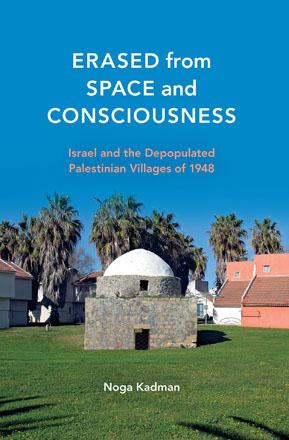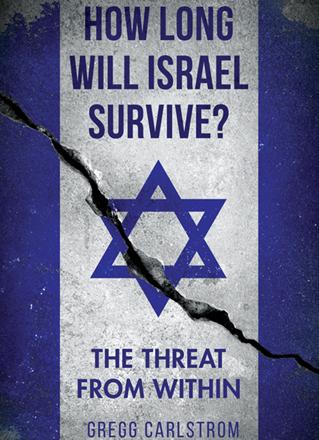You are here
Stranded on the rocks of ‘Israel exceptionalism’
By Sally Bland - Mar 15,2021 - Last updated at Mar 31,2021

The Movement and the Middle East: How the Arab-Israeli Conflict Divided the American Left
Michael R. Fischbach
California: Stanford University Press, 2020,
Pp. 297
This is a companion piece to Michael Fischbach’s earlier book, “Black Power and Palestine” (2019), covering roughly the same time period, the 1960s and 1970s, but with a different focus. While the subject matter of the earlier book is obvious from the title, the movement analysed in this new book is the broad array of (mainly white) organisations and individuals that united around opposition to the US war in Vietnam and the struggle for radical change in America.
However, when it came to taking a position on the Middle East conflict, and specifically the Palestinian cause, their unity broke down, stranded on the rocks of Israel’s supposed “exceptionalism”. Despite the major impact of this issue, as Fischbach notes in the prologue, “Many scholars have written about the US Left in the 1960s and 1970s and the reasons for its weakening and decline, but none have analysed the Arab-Israeli conflict’s role in this context, or indeed discussed the white Left’s grappling with that conflict to any great extent”. (p. 3)
As an American historian specialising in the Middle East, particularly Palestine and Jordan, Fischbach is uniquely qualified to address this issue. By shedding light on how the Middle East factored into the American Left’s division, his book fills a major gap in understanding of that period and, by implication, of why the US government’s pro-Israeli bias has been so consistently maintained. According to Fischbach, the broad anti-war movement split on how to practice revolutionary internationalism: Should leftists support all Third World movements fighting for liberation from imperialism, or were Palestinians unworthy of support due to the special status of their coloniser? “Support for global revolution versus ‘Israel exceptionalism’ proved to be a major source of contention and division within the Left… The disproportionately large Jewish presence within the Left further complicated the question… Whether to support Israel or the Palestinians sometimes became a particularly and deeply personal decision for many Jews, because the issue was often tied to their identity as members of a global minority that long had struggled against a bitter history of persecution.” (p. 3)
In fact, the Middle East conflict was largely overlooked by the Left until the 1967 war showed just how crucial it was for questions of war and peace globally. Steering away from generalities, Fischbach goes into detail about the various organisations involved, from the Old Left, such as the Communist Party and the Socialist Party of America, to the New Left, such as the SDS (Students for Democratic Society), as well as the feminist and student movements. In fact, the plethora of groups and parties covered would be hard to keep track of were it not for the list of acronyms strategically placed first in the book.
The main way that Fischbach makes his book interesting and accessible is by telling the stories of leading figures in the various parts of the movement: What awakened them to the urgency of the Middle East conflict, how they grappled with new awareness that contradicted their previous ideas, how they changed under the impact, and how they influenced others. Some activists discovered the parallels between Israel’s dispossession of the Palestinians and the US’s treatment of Native Americans. Others experienced cognitive dissonance in view of Israel’s support to the US war in Vietnam. The growing divisions in the movement were not only between Jews and non-Jews, but also reflected ideological and political choices. Take, for example, Jerry Rubin, co-leader of the anarchist Yippies, who believed that being Jewish made him pro-Palestinian, as he wrote in 1970: “It is the Jew who should always be on the side of the poor, the oppressed, the underdog, the wretched of the earth, because of the Jewish experience… If Moses were alive today, he’d be an Arab guerrilla.” (p. 19)
While significant portions of the movement adopted a pro-Palestinian stance or at least a more even-handed approach to the conflict, others doubled down on their defence of Israel in the context of an overall shift to the right. Fischbach concurs with other scholars who believed that the Left’s attacks on Israel were a main factor in the development of neoconservatism whereby former leftists began to support US militarism, partially on the grounds that it was needed to protect Israel. Moreover, as Noam Chomsky pointed out, “It was very convenient to support Israel because you were supporting the United States”. (p. 70)
Yet, the foundations for today’s solidarity movement had been laid; new voices, not associated with the 1960s Left, have continued to critique Israel and express concern for the Palestinians, even occasionally reaching the floor of the American Congress and impacting on public opinion. On the other hand, the pro-Israeli counterattack is still in full swing, even challenging the right to freedom of speech. Reading this book, one is struck by the sameness of their tactics from accusing Jewish supporters of the Palestinians of being self-hating to specious charges of anti-Semitism levelled at anyone criticising Israel’s occupation and human rights violations. Still, as Fischbach concludes: “The more open way in which pro-Palestinian viewpoints can be discussed publicly today is a direct result of what transpired in the 1960s and 1970s. Support for the Palestinians has moved into the liberal-left mainstream.” (p. 203)
Related Articles
Black Power and Palestine: Transnational Countries of ColourMichael R. FischbachCalifornia: Stanford University Press, 2019Pp.
Erased from Space and Consciousness: Israel and the Depopulated Palestinian Villages of 1948Noga KadmanUS: Indiana University Press, 2015Pp.
How Long Will Israel Survive? The Threat from WithinGregg CarlstromLondon: Hurst & Company, 2017Pp.

















